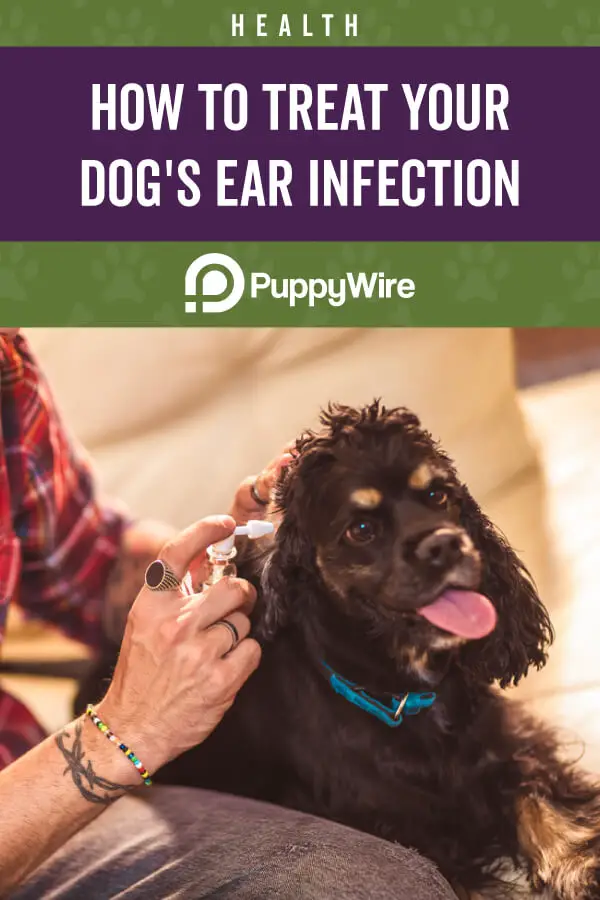How to Treat Your Dog’s Ear Infection Without Going to the Vet

Contents
Taking your dog to the vet to treat their ear infections can get very expensive if they have chronic problems, and this is why we’re going to talk about how to treat dog ear infection without vet visits. Your beloved dog will get relief, you won’t have to worry about them being in pain, and they can get back to just being their happy and healthy selves.
Why Are Ear Infections Such a Common Problem in Dogs?
Unlike humans, dogs have very deep, vertical ear canals, and this structure restricts the amount of airflow that makes it through your dog’s ears. As a result, your dog’s ears become a perfect environment for yeast or bacteria growth, and the ear will get red and inflamed as it tries to fight off the overgrowth of yeast or bacteria.
Additionally, dogs with floppy ears or dogs that like to play in the water can get too much moisture trapped in their ears, and this can lead to a warm and wet environment that’s perfect for infections. This means that treating your dog’s ear infection may not be about killing the bacteria or yeast as much as making your dog’s ear unsuitable for new growth.
Common Ear Infection Causes in Dogs
Several things could cause your dog to have an ear infection, but we’ve rounded up the top four main culprits. This will help give you a better understanding of ear infections in dogs as a whole, and it’ll help the treatment methods make more sense.
- Allergies – Many dogs have either year-round or seasonal allergies, and it can cause inflammation or it can cause your dog’s ears to get itchy. As they scratch the area, they can irritate it further and introduce bacteria to the area, resulting in an ear infection.
- Bacteria – Your dog naturally has some bacteria in their ears, and this normally isn’t a problem. However, you start to see ear infections when you have an overgrowth of “bad” bacteria that settles in your dog’s ears or bacteria from contaminated water that gets in as your dog plays in the water.
- Hormone Issues – If your dog has issues with their adrenal gland or thyroid gland, this can lead to an imbalance in their hormones. When this happens, it can increase the risk of inflammation and issues deep in your dog’s ears.
- Yeast: One of the most common causes of ear infections in dogs comes from an overgrowth of yeast. This can happen if your dog has digestive issues or issues with their hormones, and you should see it start to clear up once you address the underlying issue.
Dog Ear Infection Symptoms
There are several classic symptoms that come with ear infections in dogs, and you want to treat them as soon as possible to prevent the ear infection from getting worse or even rupturing your dog’s eardrum. If it gets to this point, your dog could have permanent damage like hearing loss, so you want to avoid it at all costs.
Head Shaking
Ear infections can happen in both the outer and inner layers of your dog’s ears, and you may notice them shaking their heads in an attempt to ease the pressure or itchiness they feel. They may do a short shake every few minutes, and you may even notice them starting to whine if it gets painful.
Strong Odor
As your dog’s ear infection progresses and gets worse, you’ll most likely start to notice a lingering odor that gets stronger over time. This odor is very recognizable once you’ve smelled it, and it’s a result of a yeast overgrowth that won’t go away until you treat it.
Dark or Smelly Discharge
Dark or smelly discharge from your dog’s ears is usually a very good clue that there is something deeper going on like an infection. If your dog’s ear infection gets to this point, it’s usually pretty advanced, and this is where you will most likely require a veterinarian to treat it.
Treatment Options to Help Your Dog’s Ear Infections
You want to catch your dog’s ear infections sooner rather than later because once they pass a certain point, you’ll need antibiotics to treat it effectively. However, there are several things you can do to stop an ear infection from getting worse, and it may even help to get rid of it completely.
The easiest way to treat your dog’s ear infection is to find an appropriate type of dog ear cleaner. We recommend the Zymox Otic Pet Ear Treatment with Hydrocortisone (Want to see how we came to this conclusion? Read our Dog Ear Cleaner Buying Guide).
If you would rather try a home remedy…we have listed 4 of the most popular ones below.
4 of the Most Popular Home Remedies for Dog Ear Infections
Apple Cider Vinegar
One popular natural remedy to fight ear infections is apple cider vinegar because it contains high levels of acetic acid. Acetic acid can take on and kill both yeast and bacteria, and this helps to get to the root problem of your dog’s ear infection and treat it from the inside out.
In order to treat your dog’s ear infection with apple cider vinegar, get a glass and mix your apple cider vinegar with water in a 1:1 ratio. Take a small syringe and fill it with this mixture and gently squirt it into your dog’s ear.
You can massage the outside of your dog’s ear to ensure that the apple cider vinegar gets all of the ways through the ear canal, and then gently take a cotton ball and soak it in the mixture to gently clean your dog’s ear flap as well. The vinegar will kill the bacteria and yeast, and this can get rid of the infection.
Coconut Oil
Coconut oil is immensely popular for several medicinal purposes, and it can also be an effective tool to help you fight bacterial and fungal infections because it contains antifungal and antibacterial properties. This means that you can use it on ear mite infections too to help clear them up.
To use this method, dip a cotton ball in coconut oil and gently rub it around the outer layer of your dog’s ear, or heat it up slightly and add a few drops of the warm oil into your dog’s ear canal. Not only can it help to clear up the infection, but it can also soothe inflammation and add moisture back into your dog’s skin to make it soft and healthy.
Mullein Flower Oil
Mullein is a plant that is native to the northwestern portion of the United States, and it’s often mixed with garlic extract to form a powerful antibacterial oil that works to help cure ear infections in dogs. You can purchase this plant online or at your local florist shop and put it in a glass jar with a clove of garlic and enough olive oil to cover it.
For best results, let this mixture sit for two weeks and strain it out to get the remaining oil. You can add a few drops of this oil to your dog’s ear and gently massage it around to kill the bacteria and restore the yeast balance to your dog’s ear.
Calendula
This herb is effective at killing the bacteria that can cause your dog’s ear infection, and it has pain-relieving properties associated with it that makes it safe to use both internally and externally. You can make your own infusing using this flower, or you can buy the oil from many vitamin stores or online.
If you choose to make your own oil, simple add Calendula flowers to a glass jar with enough olive oil to cover it along with a clove of garlic and let it sit for four days. Strain the oil out, heat it up slightly, and apply a few drops to your dog’s inner ear as well as around the outer ear for the best results.
Ways to Prevent an Ear Infection in Your Dog
People say that prevention is better than treatment, and this holds true for ear infections with your dog as well. Ideally, you want to prevent an ear infection from forming because this can reduce the chances of any problems down the road or of your dog feeling discomfort. You can treat ear infections by:
- Each time your dog gets wet, make sure you thoroughly dry their ears inside and out.
- Have any excessive hair in and around your dog’s ear canal removed by a vet or groomer to allow for good airflow.
- Clean your dog’s ears regularly with a recommended solution. Your vet can help you choose one, and you simply get a cotton ball wet and rub it around the outer layer of your dog’s ear and dry the area very well.
- If your dog has allergies, make sure that you take care of them because this can prevent excessive itching or inflammation.
- Make a point to inspect your dog’s ears every few days for debris or redness and flush them as needed.
Your dog is your family, and you want to keep them healthy and happy throughout their lives. You can help achieve this goal by keeping an eye on their ears and treating them as soon as you notice a problem.
If you catch your dog’s ear infection early on, it’s relatively quick and easy to treat it, but if it gets too far gone, a veterinarian may have to prescribe antibiotics. We’ve given you several ways how to treat dog ear infection without vet, and you can try them and see which ones work for your dog.
